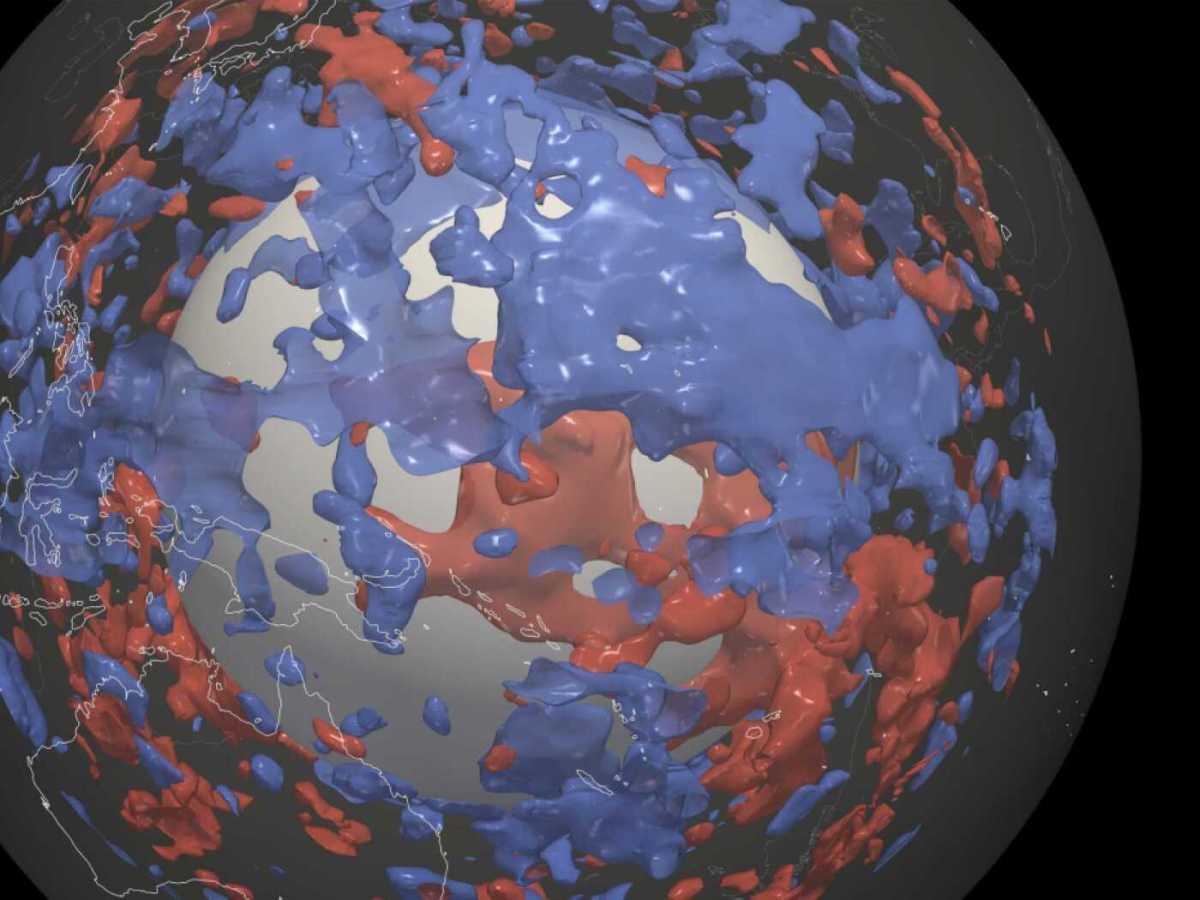Swiss Scientists Discover Unusual Zones In Earth's Mantle
-
Deutsch
de
Zürcher Geophysiker entdecken ungewöhnliche Zonen im Erdmantel
Original
Read more: Zürcher Geophysiker entdecken ungewöhnliche Zonen im Erdmante
+Get the most important news from Switzerland in your inbox
Using a new high-resolution model, scientists have discovered areas in the Earth's interior that look like the remains of submerged plates.
“Yet, these are not located where they were expected; instead, they are under large oceans or in the interior of continents – far away from plate boundaries,” the Swiss federal technology institute ETH Zurich wrote in a press release on Tuesday.
The research was carried out jointly by geophysicists from ETH Zurich and the California Institute of Technology and was recently published in the Scientific Reports journal.
Up to now, such plates have always been discovered where they were expected, according to ETH Zurich. In other words, where two tectonic plates meet and one dives under the other into the Earth's interior. This has helped scientists to investigate the formation and destruction of plates on the Earth's surface over the course of its history.
Phenomenon not yet explainedHowever, according to current plate tectonic theories and findings, there should be no material from submerged plates under the western Pacific region. According to ETH Zurich, it is impossible that there were subduction zones nearby in recent geological history.
More More Earth's core 'cooling faster than thought'This content was published on Jan 15, 2022 The Earth may be losing its internal heat at a faster rate than previously estimated, according to Zurich scientists.
Read more: Earth's core 'cooling faster than thoughtGeophysicists often use seismograms, or earthquake recordings, to determine the speed at which earthquake waves propagate. They then use this information to calculate the internal structure of the Earth.
As the researchers can only study the zones indirectly via the speed of seismic waves, they are not yet able to say conclusively what exactly is hidden in the Earth's mantle.
In addition to the remains of tectonic plates, the scientists believe that it could be either ancient, silica-rich material that has been there since the formation of the mantle about four billion years ago and has survived despite the convective movements in the mantle, or zones where iron-rich rocks accumulate as a consequence of these mantle movements over billions of years.
More More Scientists uncover new insights into the Earth's formationThis content was published on Jul 9, 2022 A research team led by Zurich scientists believe they have found a new theory behind how the Earth was formed.
Read more: Scientists uncover new insights into the Earth's formatioTranslated from German by DeepL/sb

Legal Disclaimer:
MENAFN provides the
information “as is” without warranty of any kind. We do not accept
any responsibility or liability for the accuracy, content, images,
videos, licenses, completeness, legality, or reliability of the information
contained in this article. If you have any complaints or copyright
issues related to this article, kindly contact the provider above.
Most popular stories
Market Research

- Pascal And Treehouse Partner On Proof Of Concept To Pioneer Smart Clearing For Decentralized Fixed Income Products
- Ecosync & Carboncore Launch Full Stages Refi Infrastructure Linking Carbon Credits With Web3
- Japan Well Intervention Market Size To Reach USD 776.0 Million By 2033 CAGR Of 4.50%
- Nickel Market Estimated To Exceed USD 55.5 Billion By 2033
- United States In Vitro Diagnostics Market Trends With Growth Forecast Outlook 20252033
- Primexbt Launches Empowering Traders To Succeed Campaign, Leading A New Era Of Trading






















Comments
No comment